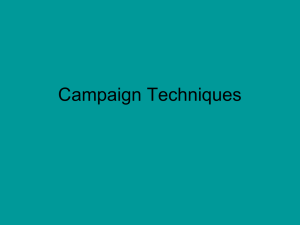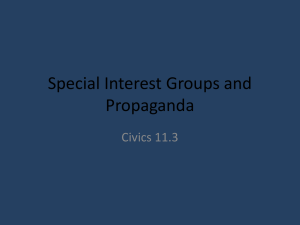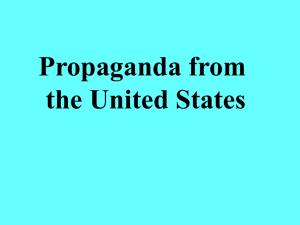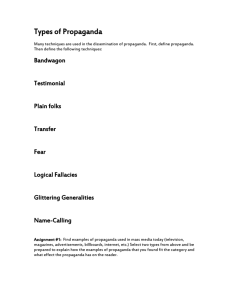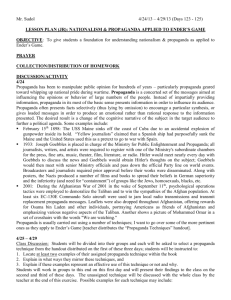a "compare-and
advertisement
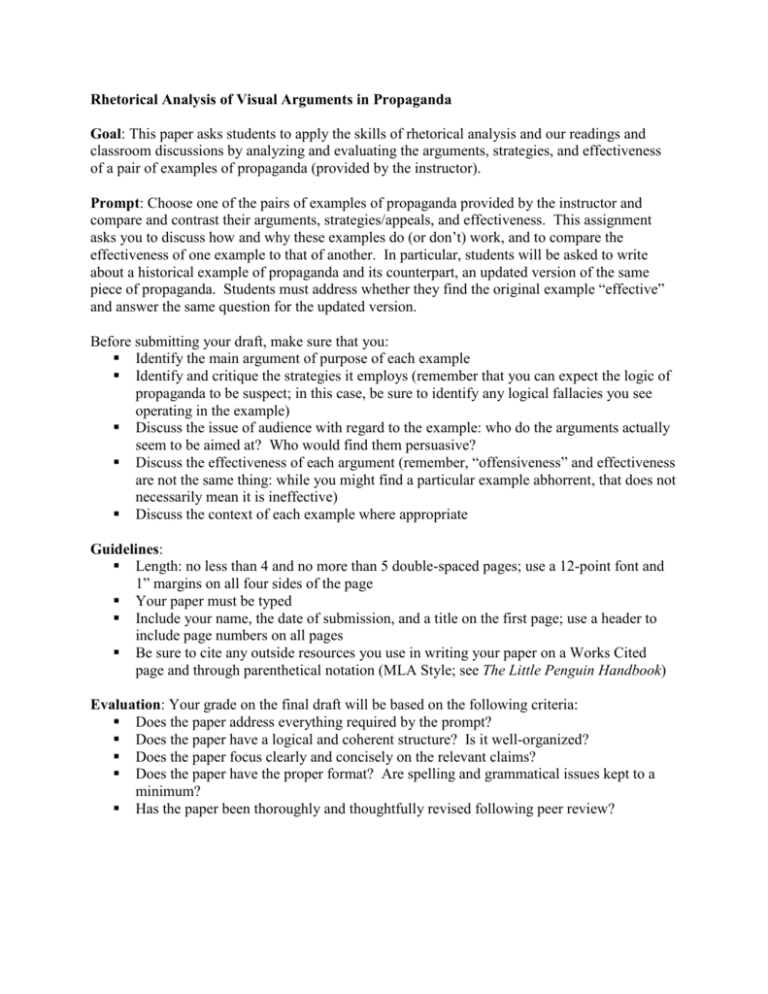
Rhetorical Analysis of Visual Arguments in Propaganda Goal: This paper asks students to apply the skills of rhetorical analysis and our readings and classroom discussions by analyzing and evaluating the arguments, strategies, and effectiveness of a pair of examples of propaganda (provided by the instructor). Prompt: Choose one of the pairs of examples of propaganda provided by the instructor and compare and contrast their arguments, strategies/appeals, and effectiveness. This assignment asks you to discuss how and why these examples do (or don’t) work, and to compare the effectiveness of one example to that of another. In particular, students will be asked to write about a historical example of propaganda and its counterpart, an updated version of the same piece of propaganda. Students must address whether they find the original example “effective” and answer the same question for the updated version. Before submitting your draft, make sure that you: Identify the main argument of purpose of each example Identify and critique the strategies it employs (remember that you can expect the logic of propaganda to be suspect; in this case, be sure to identify any logical fallacies you see operating in the example) Discuss the issue of audience with regard to the example: who do the arguments actually seem to be aimed at? Who would find them persuasive? Discuss the effectiveness of each argument (remember, “offensiveness” and effectiveness are not the same thing: while you might find a particular example abhorrent, that does not necessarily mean it is ineffective) Discuss the context of each example where appropriate Guidelines: Length: no less than 4 and no more than 5 double-spaced pages; use a 12-point font and 1” margins on all four sides of the page Your paper must be typed Include your name, the date of submission, and a title on the first page; use a header to include page numbers on all pages Be sure to cite any outside resources you use in writing your paper on a Works Cited page and through parenthetical notation (MLA Style; see The Little Penguin Handbook) Evaluation: Your grade on the final draft will be based on the following criteria: Does the paper address everything required by the prompt? Does the paper have a logical and coherent structure? Is it well-organized? Does the paper focus clearly and concisely on the relevant claims? Does the paper have the proper format? Are spelling and grammatical issues kept to a minimum? Has the paper been thoroughly and thoughtfully revised following peer review? Notes: In order to get some context on the issue, take a look at the following resources (I am not vouching for the accuracy of these sources, nor am I endorsing their content; I’m simply providing them as a resource to help you get started): o http://en.wikipedia.org/wiki/Propaganda o http://www.propagandacritic.com/ o http://www.teacheroz.com/WWIIpropaganda.htm o http://www.calvin.edu/academic/cas/gpa/ww2era.htm o http://homepage.mac.com/leperous/PhotoAlbum1.html Additionally, you may want to use some of the material and ideas included in the selections from Age of Propaganda Finally, you are encouraged to take a look at some chapters from the course rhetoric textbook for additional ideas about this paper: o Chapter XXX – On visual arguments o Chapter XXX – On the fallacies of argument o Chapter XXX – On writing compare/contrast papers





